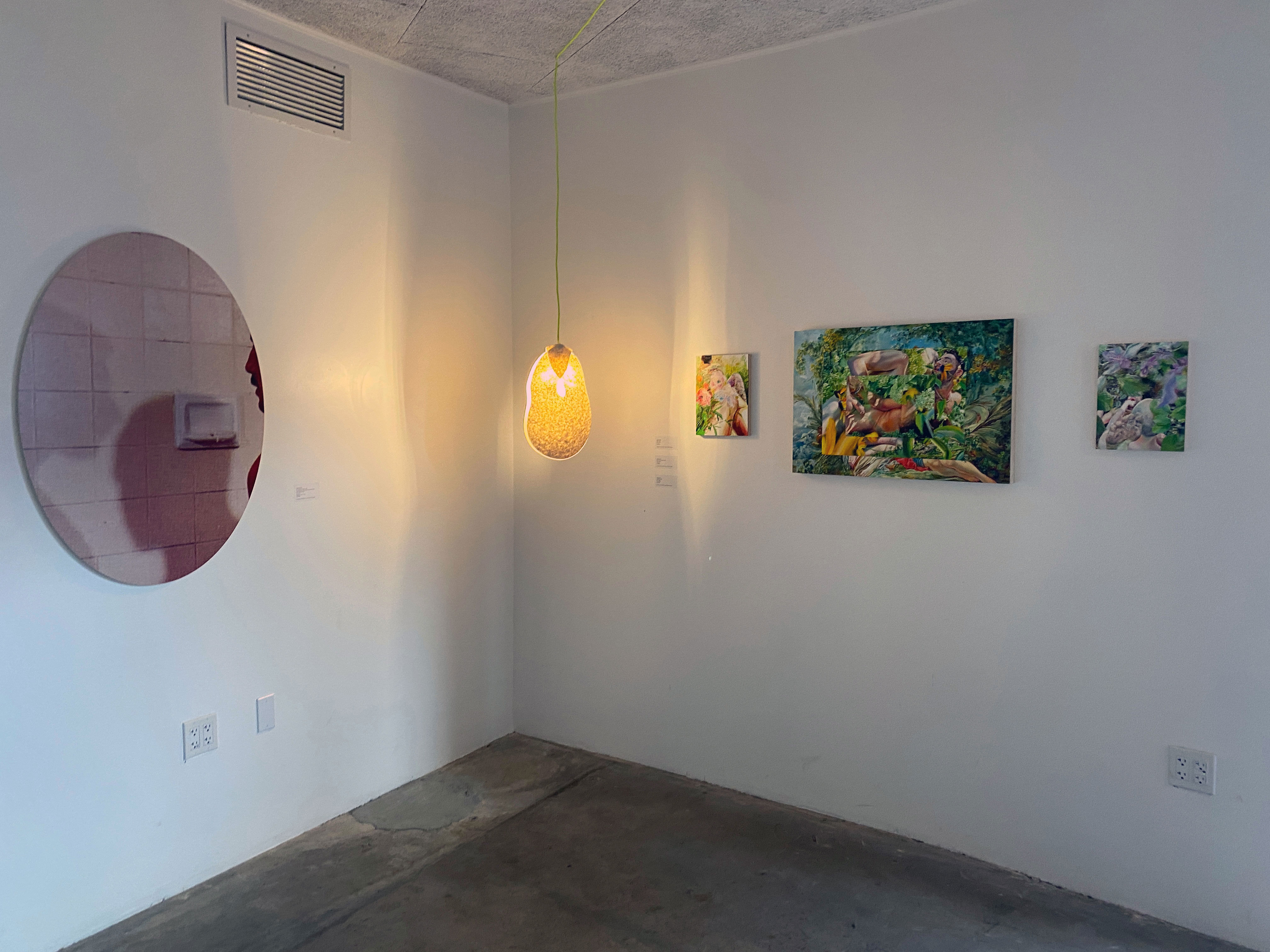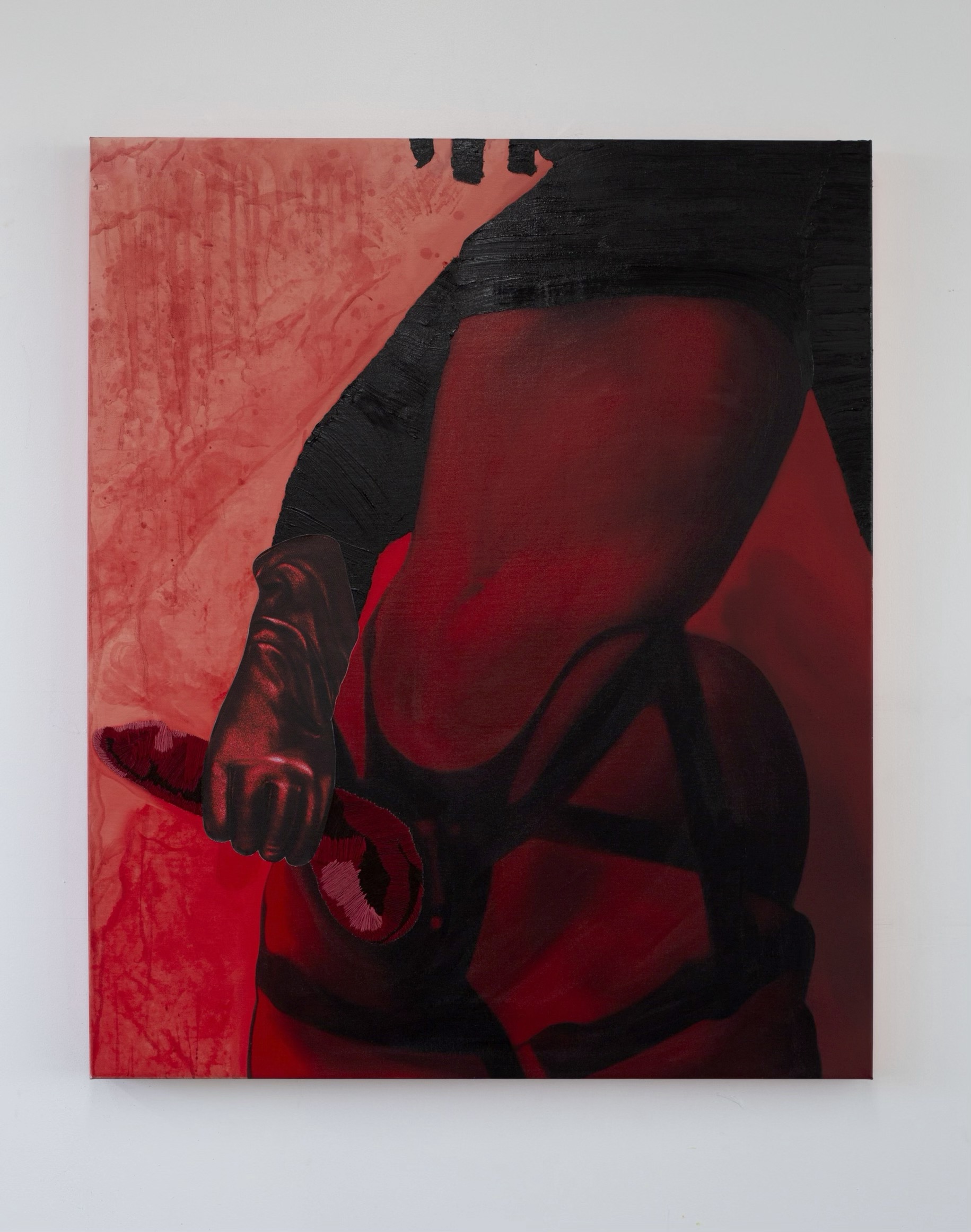Tom’s Queers
2022 Tom of Finland Arts & Culture FestivaL
2022 Tom of Finland Arts & Culture FestivaL
Judie Bamber, Enrique Castrejon, JD Raenbeau, Pacifico Silano, Dom Victoria, and Zoe Walsh
Read the exhibition essay HERE























Artillery Magazine Presents Tom’s Queers
Curated by Tucker Neel
This special exhibition brings together works by six Queer artists whose respective practices critically engage important aspects of Tom of Finland’s impactful legacy through works that expand what it means to be a Queer artist working in and amongst “Tom’s Men” in the 21st century.
Using technical skills Tom would surely admire, artists in Tom’s Queers depict the world as one teeming with libidinal possibility. Sometimes this is in service of capturing states of empowered pleasure, as JD Raenbeau does in chromatically explosive paintings of himself and his husband enjoying each other’s naked bodies amidst a verdant garden. Their bodies overlay and intertwine with selective reproductions of Fragonard paintings, a complex counter to modernist dismissals of Rococo excess and the ever-present fear of flaming, Queer, “unproductive” intercourse.
In other instances, artworks compel us to find our subjectivities reflected in the often overlooked, as happens with Judie Bamber’s meticulous and contemplative drawings. Bamber’s astonishingly detailed renderings, whether a suggestive marble façade that may or may not be a towering nude woman, or a graphite study of a diminutive dildo, use the thrill of verisimilitude to unlock unavoidable libidinal associations. Her work calls to mind Tom’s own masterful sketches, as well as his ability to find the sexual potentialities in things like uniforms, motorcycles, and the not-so-hidden phalluses that populate the everyday.
Dom Victoria likewise utilizes painterly expertise, along with intricate embroidery and inventive collage, to create images that interrogate how power relationships formalize into visual representations in the transactional context of sex work. Their paintings explore what it means to look and be looked at, to have contingent control, and see bodies as fragmented parts of an elusive whole, all while confronting viewers with images that do not conform to heteronormative pre-suppositions regarding race, gender, sex, and labor. Like Tom before them, Dom Victoria’s work brings to the fore the reality of bodies engaged in sexual acts the Straight world tries very hard to ignore, criminalize, and erase.
Other works in the exhibition allow one to reflect on how Tom’s art manifested new ways of envisioning homosexuality as unapologetically masculine and pleasurable, while also considering how the archetypes he pioneered produced their own normative bodies and behaviors. Pacifico Silano’s photo-based works inspire this sort of re-examination. His photograph and sculpture investigate how porn shaped Gay men’s understandings of sex, race, and gender in the late 20th century. He mines pornographic material for moments that interrupt the overtly masculine, instances that slow down an understanding of sexualized identity formation. He then re-photographs and re-presents these images using unexpected framing devices to produce cameo-like pictures or transforms elements of hardcore porn into soft, flowing silk.
Enrique Castrejon’s work also engages a Queer analysis of how media impacts ways of seeing and understanding representations of sexuality and gender today. For the work in this exhibition, Castrejon explores images of Gay culture from popular magazines and periodicals, selecting and cutting apart pictures that present the LGBTQ body as an object for examination. He then measures and re-inscribes the geometric “facts” of these images through seemingly obsessive diagrammatic notations, presenting cacophonous information to the viewer. His process mimics classical figure drawing rituals, the back-and-forth calculation of proportional size from observed subject to drawn image. This ritual was something Tom perfected throughout his career through mastery of observational drawing techniques and the help of photographs and magazine clippings. Castrejon engages in a similar exploration, but in a purposefully absurdist way, to ask at what point does the desire to know an image and extract information from it obscure other modes of sensorial comprehension?
This desire to play with the unsettledness of representation and comprehension also occurs in Zoe Walsh’s paintings. Working from photos from the 1984 Gay porn Ramcharger, which features the cowboys and leather daddies Tom’s work birthed into existence, Walsh uses digital image manipulation and layers upon layers of arresting color to create viewing experiences that teeter on the precipice of recognition. In their paintings, one might make out silhouettes mid-fellatio or torsos thrust backward in orgasmic release, but these forms appear among multiple transparent planes, evoking intersecting perceptions simultaneously. In these moments that resist categorical representation, Walsh’s work opens opportunities for emerging trans subjectivities.
©2024 Tucker Neel. All rights reserved.